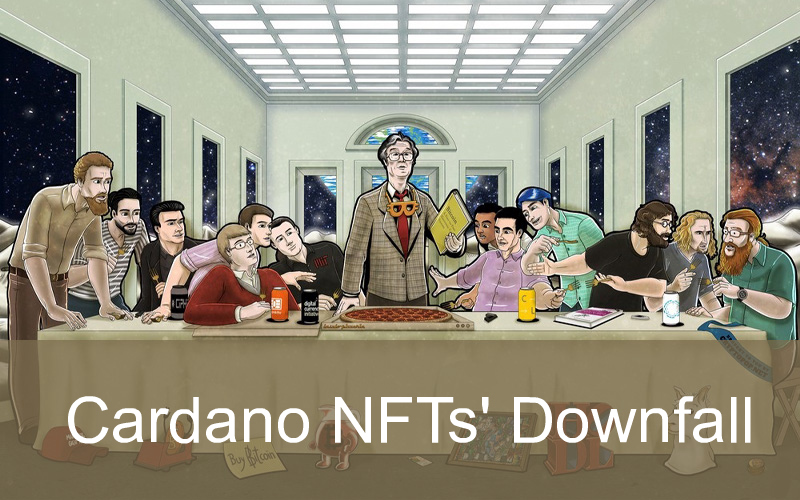NFTs are a digital asset class made up of unique, non-copyable tokens that are registered on blockchain networks. They are often associated with media content, collectibles, and in-game items. Last year, NFTs experienced a significant boom, catapulting some of the leading Token-Generating Event (TGE) platforms on the Ethereum blockchain such as CryptoKitties and NFTs such as Mars Symbols to international fame.
As the NFT market matures, users are focusing on higher-tier projects such as the Decentral Games platform and F1® Delta Time. According to data from the NFT Fund Index, the overall NFT market has been steadily climbing since January 2020. With the increased focus on newer projects, the Cardano NFTs market has taken a hit, as users trade its projects for others.
The bull market in digital assets have coincided with the NFT boom, making the overall performance of Cardano's NFTs relatively gloomy compared to the overall NFT market. Forkast CAR NFT Composite shows the Cardano ecosystem experienced a 27.2% decrease in May 2021, while the NFT fund index rose by 17.7%.
Compared to other major blockchain NFT ecosystems, such as Ethereum, Binance Smart Chain, and Polkadot, Cardano's NFT projects are still well behind in terms of projects initiated, as well as the overall market size and token price appreciation. This is despite the Cardano NFTs ecosystem taking measures to keep their TGEs competitive. For example, Cardano's Djedollar stablecoin's developers used a competitive reserve to help ensure its stability.
The Cardano NFTs market has been facing a competitive atmosphere from other major blockchain ecosystems. The recent downturn in the market is likely the result of users taking a closer look at newer projects. Although the NFT market is still in its formative stages, the competition for users could heat up as newer projects become popular. It will be interesting to see how the Cardano NFTs ecosystem evolves from here.
 Liam Smith
Liam Smith
- 2023-04-13
The Struggle of Cardano's NFTs Market
Last year, the NFT market boomed, catapulting some of the most popular NFTs to fame. However, the Cardano NFTs market has taken a hit due to users trading their projects for others. We explore why, and how the Cardano NFTs ecosystem can evolve from here.

